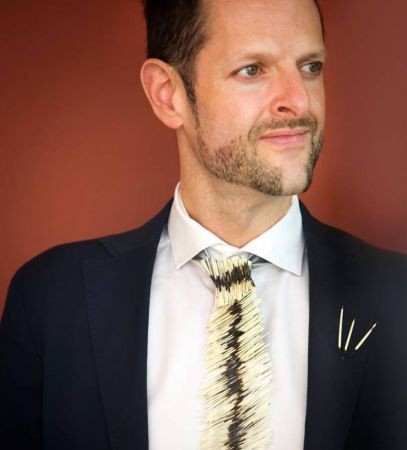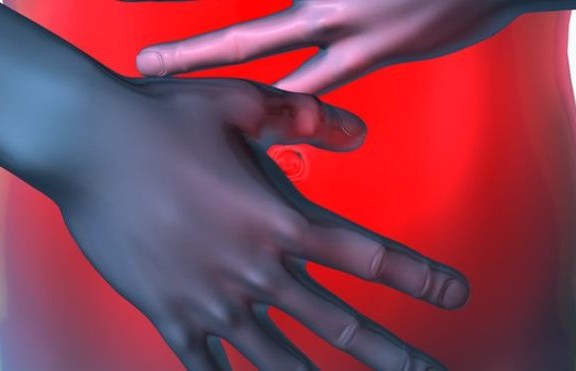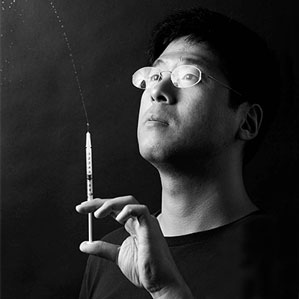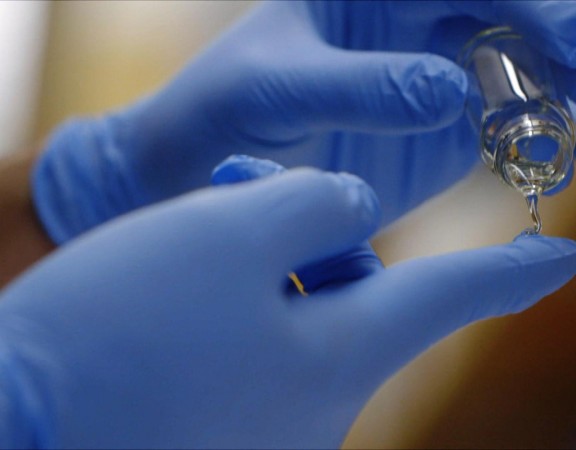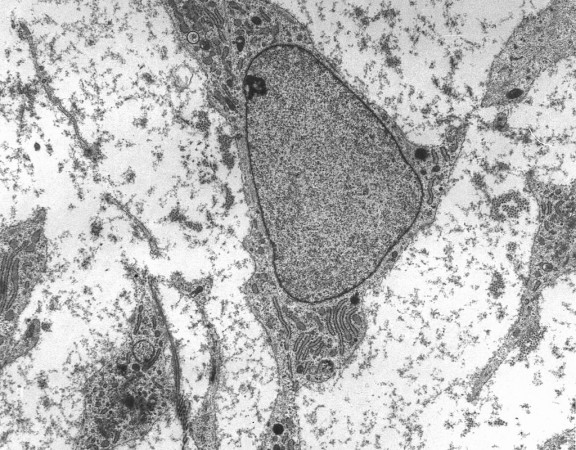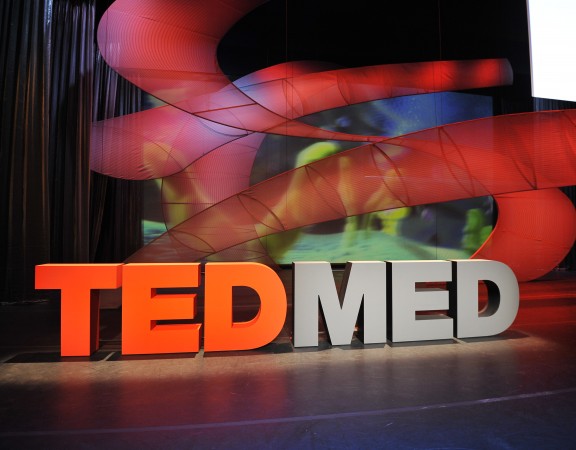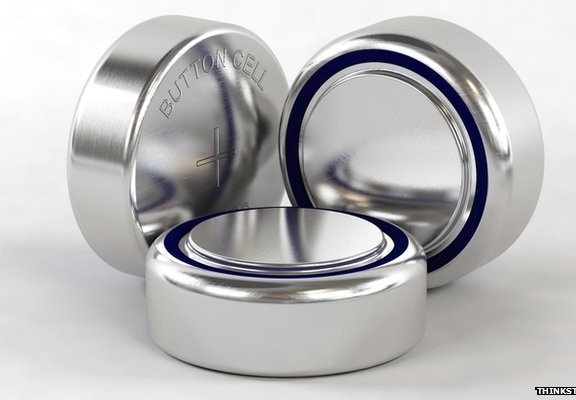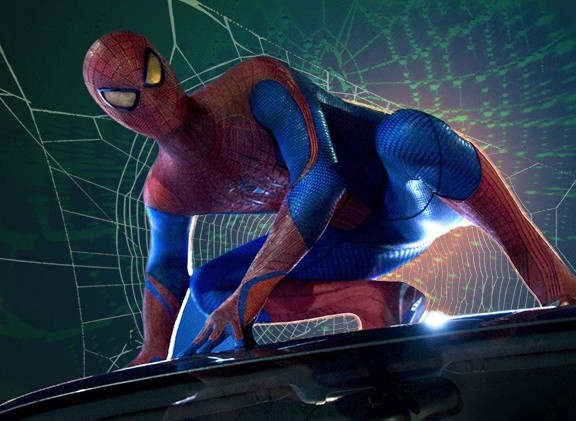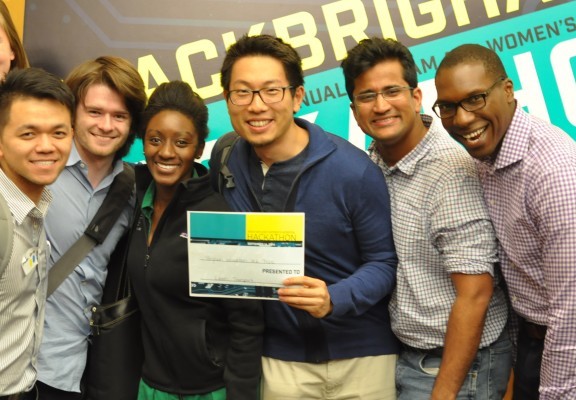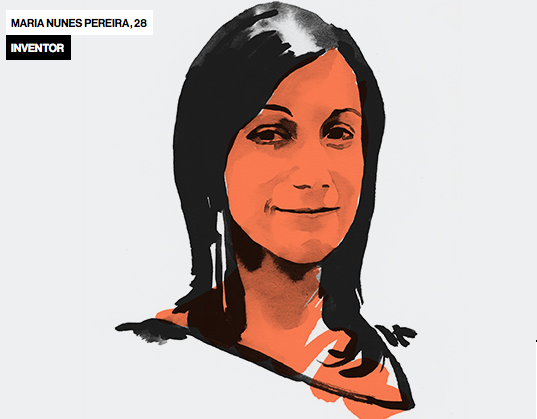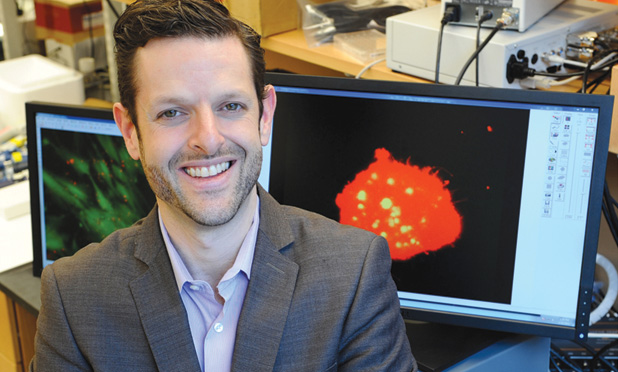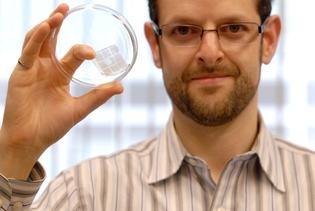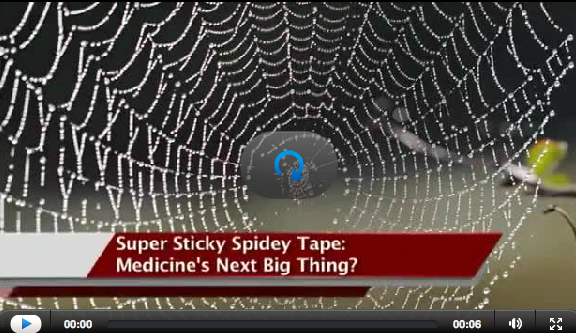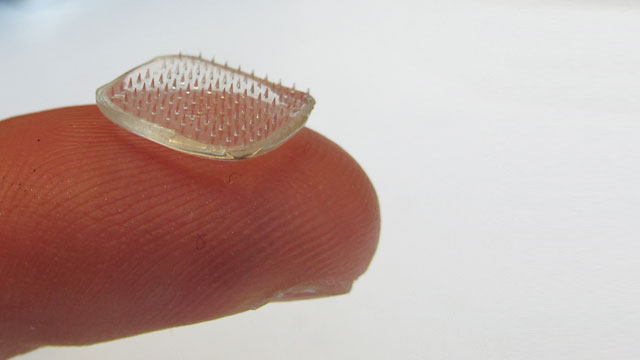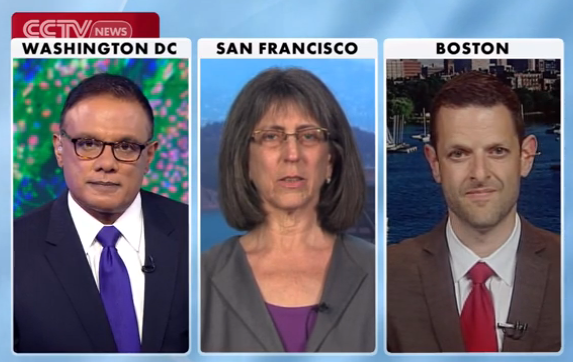NEWS
Source: Fortune
Jeff Karp, a leading biomedical engineer, discusses where, why, and how academic-business ventures can be most successful.
The biomedical industry is driven by scientific innovation. Yet, as anyone who has worked in R&D can tell you, harnessing the kind of creativity necessary for innovation is easier said than done. But there’s a new methodology in play that is making fascinating strides in the development of new medical technologies. And it’s a process that often starts not in the lab but at the zoo.
Read more on Fortune – Bringing the Fire: A Q&A with Bioinspirationalist Jeff Karp…
Source: BBC
A gel that “sticks” to affected tissue and delivers medicine gradually over time could help treat some inflammatory bowel problems, researchers say.
Patients with ulcerative colitis often have to rely on medicine given by enema, but this can be uncomfortable, messy and inconvenient.
Source: MIT Technology Review
Tiny Glue Guns to Patch Surgical Holes
Glue made of nanoparticles, delivered by a needle, can be a better replacement for sutures and surgical staples.
Read more on MIT Tech Review – Tiny Glue Guns to Patch Surgical Holes…
<div id=”fb-root”></div><script>(function(d, s, id) { var js, fjs = d.getElementsByTagName(s)[0]; if (d.getElementById(id)) return; js = d.createElement(s); js.id = id; js.src = “//connect.facebook.net/en_US/sdk.js#xfbml=1&version=v2.3″; fjs.parentNode.insertBefore(js, fjs);}(document, ‘script’, ‘facebook-jssdk’));</script><div class=”fb-video” data-allowfullscreen=”true” data-href=”https://www.facebook.com/video.php?v=10153189392166880&set=vb.266790296879&type=1″><div class=”fb-xfbml-parse-ignore”><blockquote cite=”https://www.facebook.com/video.php?v=10153189392166880&set=vb.266790296879&type=1″><a href=”https://www.facebook.com/video.php?v=10153189392166880&set=vb.266790296879&type=1″></a><p>This super-adhesive glue could literally fix a broken heart: http://bloom.bg/1F9y5l5</p>Posted by <a href=”https://www.facebook.com/video.php?v=10153189392166880&set=vb.266790296879&type=1″>Bloomberg Business</a> on Monday, March 30, 2015</blockquote></div></div>
Read more on Bloomberg – The Glue That Could Literally Fix a Broken Heart…
Source: The Scientist – Stem Cells Phone Home
Stem Cells Phone Home
A screen of 9,000 small molecules identifies a treatment that improves the targeting of mesenchymal stem cells to sites of damaged tissue.
We’re very pleased to announce that Jeff has just been announced as a member of the 2015 TEDMED Editorial Advisory Board. Heartiest congratulations to all new members!
For more information – TEDMED
Read more on Jeff Karp on 2015 TEDMED Editorial Advisory Board…
Jeff’s TEDMED 2014 talk, illuminating the art and science of developing medical tools, treatments, and technologies from solutions found in nature.
Source: BBC – ‘Quantum coat’ makes batteries child-safe
Engineers in the US have produced child-safe batteries with a special coating that stops them causing harm if they are swallowed.
Small, button-shaped batteries can be easy to swallow and cause thousands of injuries every year, some fatal.
Read more on BBC – ‘Quantum coat’ makes batteries child-safe…
Our heartiest congratulations to Girish and Julien for their outstanding performance at this year’s BWH Hackathon 2014.
Great job guys!
The BWH Hackathon in collaboration with the Brigham Innovation Hub and MIT Hacking Medicine will bring together inventive, forward-thinking minds to change the status quo and create disruptive solutions in healthcare today. The event will bring together a diverse, multidisciplinary group to “pitch” problems impacting healthcare, develop solutions over a two-day period, and then present demos of solutions to a panel of judges for recognition and honors.
Read more on Karp Lab Members Girish and Julien Place First at BWH Hackathon 2014!…
We’re exceptionally proud to announce that Maria Pereira has won the prestigious MIT Tech Review Innovators Under 35 Award for her work on cardiac adhesives! Congratulations Maria!
MIT Tech Review

Five years ago, Jeffrey Karp sat down to a dinner party with Massachusetts General Hospital dermatologist R. Rox Anderson. The two started talking, and by the end of the evening, Karp—himself a bioengineer at the nearby Brigham and Women’s Hospital—knew he wanted to make a collaboration happen between them. But on what? As he thought, he twisted his ring—his nickel allergy had flared up, and the skin on his finger was chafed and raw. Twist, and think; twist, think. And then it hit him: up to 45 million people in the United States shared his allergy, and the best measures they had to control it were small-molecule chelating creams with a dangerous tendency to leach into the skin.
We were recently featured in an article in partnership with the Nature Publishing group. The article highlights the importance of our focus solving important biomedical problems that can be effectively translated into effective solutions. It is still amazing what nature can teach us!
Source: Nature Publishing Group – From Nature To Clinic
One late evening in a coffee shop near McGill University, Jeff Karp overheard two students talking about drug delivery and tissue engineering. Jeff, an undergrad, listened closely as the students discussed two graduate level courses. At the time Jeff was questioning his major. He had switched from biology to chemical engineering but found himself bored in class; uninterested in the details of how refrigerators work. That night at the coffee shop Jeff learned about two classes that he became desperate to take: one on artificial organs and engineering and the other on cells and biotechnology. To enroll he would need to take no less than 5 prerequisite physiology classes. Undeterred, Jeff added a year to his undergrad studies and switched majors yet again, this time to biomedical engineering. He had finally found the right balance between medicine and engineering. Jeff says a “degree in engineering is a degree in problem-solving” and that he uses the skills he learned in undergrad every day. Read more on Feature – Nature Publishing Group…
Click link below to view video:
Ivanhoe Broadcast News – The Karp Laboratory
For full article:
We are pleased to have been featured on Ivanhoe’s recent Medical Breakthroughs. Ivanhoe is focused on providing television viewers with solutions to today’s problems, with its news reports being distributed to more than 80 million households every week.
Source: The Scientist
Sticking Power
An adhesive inspired by a parasitic worm could help better affix skin grafts in burn patients.
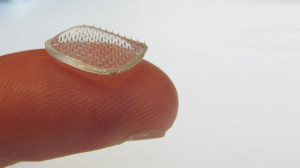
Bioengineer Jeffrey Karp is used to finding inspiration in unusual places. He’s looked to porcupines’ barbed quills and the sticky pads of geckos’ feet, for example, to develop medical adhesives. And one afternoon a few years ago he sat in his office with some of his lab members Googling parasites. Read more on The Scientist – Sticking Power…
Anchor Anand Naidoo joins Marcy Darnovsky of the Center for Genetics and Society, and Jeffrey Karp from the Harvard Stem Cell Institute to talk about the controversy surrounding a recent breakthrough in stem cell research involving the cloning of human stem cells.
Read more on Prof Karp Live on CCTV! [Panel on the Ethics of New Stem Cell Cloning Method]…
Source: Brigham and Women’s Hospital HealthHub
 The North American porcupine is easily recognizable due to its impressive coat of long, sharp quills. These unique projections are designed so that they can easily penetrate animal flesh, but are extremely difficult to remove. While this may be bad news for a predator or a curious pet, this natural mechanism is a boon for a curious medical researcher trying to develop a better medical device.
The North American porcupine is easily recognizable due to its impressive coat of long, sharp quills. These unique projections are designed so that they can easily penetrate animal flesh, but are extremely difficult to remove. While this may be bad news for a predator or a curious pet, this natural mechanism is a boon for a curious medical researcher trying to develop a better medical device.
Read more on BWH – Prickly Porcupine: Medicine’s Next Top Model?…
Original Story: SciLogs – From Nature to Nurture
One late evening in a coffee shop near McGill University, Jeff Karp overheard two students talking about drug delivery and tissue engineering. Jeff, an undergrad, listened closely as the students discussed two graduate level courses. At the time Jeff was questioning his major. He had switched from biology to chemical engineering but found himself bored in class; uninterested in the details of how refrigerators work. That night at the coffee shop Jeff learned about two classes that he became desperate to take: one on artificial organs and engineering and the other on cells and biotechnology. To enroll he would need to take no less than 5 prerequisite physiology classes. Undeterred, Jeff added a year to his undergrad studies and switched majors yet again, this time to biomedical engineering. He had finally found the right balance between medicine and engineering. Jeff says a “degree in engineering is a degree in problem-solving” and that he uses the skills he learned in undergrad every day.
Read more on Scilogs – From Nature to Nurture…
We are proud to announce that Ben Ouyang has won Canada’s Got (Science) Talent Sunnybrook Prize 2012 and a handsome $10,000 prize!
Ben would also like to give credit to his mentor Maria Pereira, who was the original creator of the material and was ‘a fantastic mentor for [him] during [his] stay at the Karplab’.
Read more on Ben Ouyang Wins Canada’s Got (Science) Talent Sunnybrook Prize!…
Source: Discovery News
Original paper: PNAS – Bioinspired multivalent DNA network for capture and release of cells
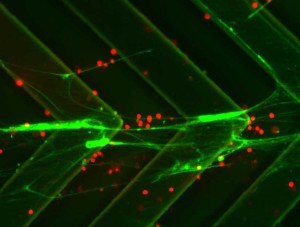
A new device inspired by jellyfish tentacles can be used to both count and sort cancer cells, which is an important indicator of how well chemotherapy or other treatments are working.
Source: Rohit Karnik and Suman Bose
Tiny strands of DNA that float like jellyfish tentacles can grab and hold tumor cells in the bloodstream in a device inspired by nature that may help cancer patients fight the dreaded disease.
The device can be used to both count and sort cancer cells, which is an important indicator of how well chemotherapy or other treatments are working. Doctors need to know whether cancer cells are being knocked out or developing immunity.
“The key is to know which drugs the remaining cells would be most susceptible to,” said Jeffrey Karp, an author on the paper published today in the Proceedings of the Natural Academy of Science (PNAS) and co-director of the Center for Regenerative Therapeutics at Brigham and Women’s Hospital in Boston. “Often these cells in the blood stream are at very low concentrations and it’s difficult to isolate them. What you really want to do is collect them and study the biology of the cells and subject them to different kinds of chemo so you know which one is best to use.”
Read more on Discovery News: Jellyfish-Inspired Tentacles Capture Cancer…
Source: MIT News
Inspiration from a porcupine’s quills

The North American porcupine
Photo: Mike Cuccarese
Read more on MIT News – Inspiration from a porcupine’s quills…
Source: CNN Health – Spiderwebs may inspire better medical tape
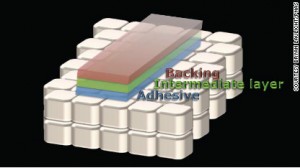 Taking medical tape off an adult isn’t too painful because breakage occurs in the glue (you can sometimes see the leftover residue). But removing the same adhesive from a newborn can break fragile skin, causing significant damage, says Jeffrey Karp, researcher at Brigham and Women’s Hospital in Boston.
Taking medical tape off an adult isn’t too painful because breakage occurs in the glue (you can sometimes see the leftover residue). But removing the same adhesive from a newborn can break fragile skin, causing significant damage, says Jeffrey Karp, researcher at Brigham and Women’s Hospital in Boston.
Traditional medical tape has two layers: the sticky one and the non-sticky one that forms the backing. The adhesive is designed for adults, Karp said; newborns need something else just for them.
Read more on Medical Tape Innovation Featured On CNN Health…
The KarpLab team is proud to announce their Movember 2012 effort! This is a renewal of our annual commitment and effort to raise funds for prostate cancer research.
Do visit the KarpLab Upper-Lip-Hair Dreamteam and contribute your bit to prostate cancer research!
Source: MIT News
New adhesive comes off quickly, sparing infants’ delicate skin from damage.
Jeff recently delivered his “News at Noon” talk at the MIT Museum.
The event is co-sponsored by the MIT News Office and the Museum, and features researchers discussing their recently promoted work. On Nov. 2, Jeff discussed his team’s new medical adhesive that is safe enough for an infant’s delicate skin.
Source: Arthritis Foundation
Karp Lab team member Oscar Miranda has been awarded a research grant by the Arthritis Foundation for his work on ‘Inflammation Responsive Hydrogels for Treatment of Inflammatory Arthritis’.
Congratulations Oscar!
Source: Brigham and Women’s Hospital
Awards & Honors – Mar 8, 2012
 O’Cearbhaill Wins at BioInnovations Conference
O’Cearbhaill Wins at BioInnovations Conference
Eoin O’Cearbhaill, PhD, BE
Eoin O’Cearbhaill, PhD, BE, postdoctoral associate in the BWH Laboratory for Advanced Biomaterials and Stem-Cell-Based Therapeutics, was awarded first prize for the best poster presentation at the Massachusetts Institute of Technology Sloan BioInnovations 2012 conference. This event was organized to showcase the most exciting life science and health care technologies with commercial potential from MIT and the greater Harvard community.
April 27 2009 On this day, the Karp Lab celebrated Dr. Weian Zhao’s recent Human Frontier Science Program (HFSP) Postdoctoral Fellowship award.In addition, the lunch also served as a farewell for Sebastian Schaefer, a graduate student from Germany. Sebastian Schaefer had been working at the lab during the period lasting from September 2008 to April 2009. He had contributed immensely to the group during this time and was highly valued for his skills in flow cytometry. Sebastian is looking forward to pursuing his Ph.D. in Germany. The Karp Lab wishes you luck and all the best, Sebastian!
On this day, the Karp Lab celebrated Dr. Weian Zhao’s recent Human Frontier Science Program (HFSP) Postdoctoral Fellowship award.In addition, the lunch also served as a farewell for Sebastian Schaefer, a graduate student from Germany. Sebastian Schaefer had been working at the lab during the period lasting from September 2008 to April 2009. He had contributed immensely to the group during this time and was highly valued for his skills in flow cytometry. Sebastian is looking forward to pursuing his Ph.D. in Germany. The Karp Lab wishes you luck and all the best, Sebastian! 

Postdoc Fellowships
http://www.karplab.net/wp-content/uploads/2008/11/postdoc-fellowships.xls
Graduate Fellowships
http://www.bioen.illinois.edu/graduate/grad_fellowships.html
http://www.nsf.gov/funding/pgm_summ.jsp?pims_id=6201&org=NSF
http://sites.nationalacademies.org/pga/Fellowships/index.htm
http://opd.tamu.edu/funding-opportunities/funding-opportunities-by-category/graduate-funding-opportunities
http://www.gradschool.cornell.edu/?p=132
BMES Engineering & Science Career Network online job placement service
http://jobboard.bmes.org/search.cfm
Surgical Video Library
http://www.biomaterialsvideos.org/
AcademicCareers
http://web.mit.edu/career/www/graduate/academiccareers.html
NIH Grant Review Process
Jeff Borenstein – Director of the Biomedical Engineering Center, Draper Laboratory (nanofabrication)
Christopher V. Carman – Assistant professor, Beth Israel Deaconess (Molecular & Vascular Medicine)
David Carter – Draper Laboratory (nano/microfabrication)
We have over 750 sq. ft. of laboratory space in the Partners Research Building at 65 Landsdowne Street, on the Harvard campus and office space adjacent to the main laboratory. Spearate office space is available to podtdoctoral fellows, technicians, and graduate students.
SELF-ASSEMBLING DRUGS
One of the fundamental problems in drug-delivery is striking a balance between toxicity and therapeutic effect. Hydrogels have been widely applied as intelligent carriers in controlled drug-delivery systems. Self-assembled hydrogel-based drug-delivery has been hindered by the unknown fate of the host gelator after the gel degradation. Thus, we propose a conceptually novel approach to address these limitations. The existing ambiguity can be substantially decreased by designing prodrug-based LMWGs from existing drugs whose metabolic pathways are well documented (See Figure below).
NEEDLES THAT SENSE TRAVEL THROUGH TISSUES
In collaboration with Alex Slocum and Erik Bassett at MIT, we have developed a new needle sensing device that can detect travel of needles through various tissues. This can be used to significantly reduce complications associated with placement of needles, wires and catheters.
INTRAOPERATIVE STEM CELL THERAPY
We are working towards development of intraoperative autologous stem cell based therapeutics that can be performed rapidly under emergent situations (e.g., within emergency room or battlefield settings).
THERAPEUTIC MICRO-DEVICES BASED ON CELL ROLLING
Cell rolling is an important physiological and pathological process that is used to recruit specific cells in the bloodstream to a target tissue. This process may be exploited for biomedical applications to capture and separate specific cell types. One of the most commonly studied proteins that regulate cell rolling is P-selectin. By coating surfaces with this protein, biofunctional surfaces that induce cell rolling can be prepared.

